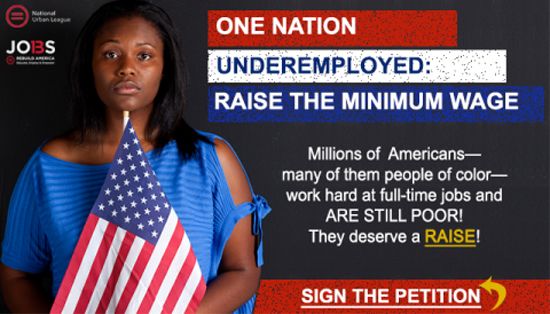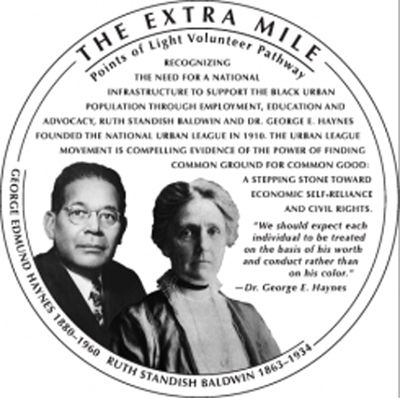Why am I not surprised?
The National Urban League has released its 38th edition of the “State of Black America® – One Nation Underemployed: Jobs Rebuild America” report. (read full press release here) You can read the book online.
From AP:
The underemployment rate for African-American workers was 20.5 percent, the report said, compared to 18.4 percent for Hispanic workers and 11.8 percent for white workers. Underemployment is defined as those who are jobless or working part-time jobs but desiring full-time work.
Marc H. Morial, President & CEO, of the National Urban League has said:
“While ‘too big to fail’ corporations went into the bail-out emergency room and recovered to break earnings and stock market records, most Americans have been left in ICU with multiple diagnoses of unemployment, underemployment, home losses and foreclosures, low or no savings and retirement accounts, credit denials, cuts in education and school funding-and the list of maladies continues.”
Black communities in the U.S. are engaged in struggles on multiple fronts-the economy, the criminal justice and penal system, voter suppression and repression, the environment-especially as it relates to urban areas, education, housing…wrap it up in a package and stamp a label of systemic racism on it.
What’s important from my perspective, is to focus on groups and organizations that are carrying the fight forward on different fronts, so today I’d like to highlight the work being done by the National Urban League.
First a little history:
The Committee on Urban Conditions Among Negroes was founded in New York City on September 29, 1910 by Ruth Standish Baldwin and Dr. George Edmund Haynes, among others. It merged with the Committee for the Improvement of Industrial Conditions Among Negroes in New York (founded in New York in 1906) and the National League for the Protection of Colored Women (founded in 1905), and was renamed the National League on Urban Conditions Among Negroes.
In 1918, Eugene K. Jones took the leadership of the organization. Under his direction, the League significantly expanded its multifaceted campaign to crack the barriers to black employment, spurred first by the boom years of the 1920s, and then by the desperate years of the Great Depression. In 1920, the organization took the present name, the National Urban League. The mission of the Urban League movement is “to enable African Americans to secure economic self-reliance, parity, power and civil rights.”
In 1949, Lester Granger was appointed Executive Secretary and led the NUL’s effort to support the March on Washington proposed by A. Phillip Randolph, Bayard Rustin and A. J. Muste to protest racial discrimination in defense work and the military. During the African-American Civil Rights Movement (1955-1968), Granger prevailed in his insistence that the NUL continue its strategy of “education and persuasion”.
In 1961, Whitney Young became executive director amidst the expansion of activism in the civil rights movement, which provoked a change for the League. Young substantially expanded the League’s fund-raising ability- and made the League a full partner in the civil rights movement. In 1963, the NUL hosted the planning meetings of A. Philip Randolph, Martin Luther King, Jr., and other civil rights leaders for the March on Washington. During Young’s ten-year tenure at the League, he initiated programs such as “Street Academy,” an alternative education system to prepare high school dropouts for college; and “New Thrust,” an effort to help local black leaders identify and solve community problems. Young also pushed for federal aid to cities.
The big push this year for the Urban League is addressing jobs and raising the minimum wage .
Imagine working 40 hours a week, but still worrying about putting food on the table – or having to choose between paying your housing bill or your heating bill. Imagine working 40 hours a week and barely making enough to live, let alone save or plan for the future. Imagine working full-time and still being poor with no way out or up. Sadly, millions of Americans don’t have to IMAGINE – this is the reality they face every day.
The road from poor to plenty is long, but raising the minimum wage is an important first step in lifting millions of families out of poverty and giving them a chance at a better life. The last time the minimum wage was enough to support a family was in 1968. Lyndon Johnson was president, and a gallon of gas was 34 cents. Times have changed – and so should wages.
Marc H. Morial talks about the need for a jobs bill, infrastructure bill, and raising the minimum wage
How can you help? First step, sign the petition
Second step, you can join or support them with a donation.
Cross-posted from Black Kos


10 comments